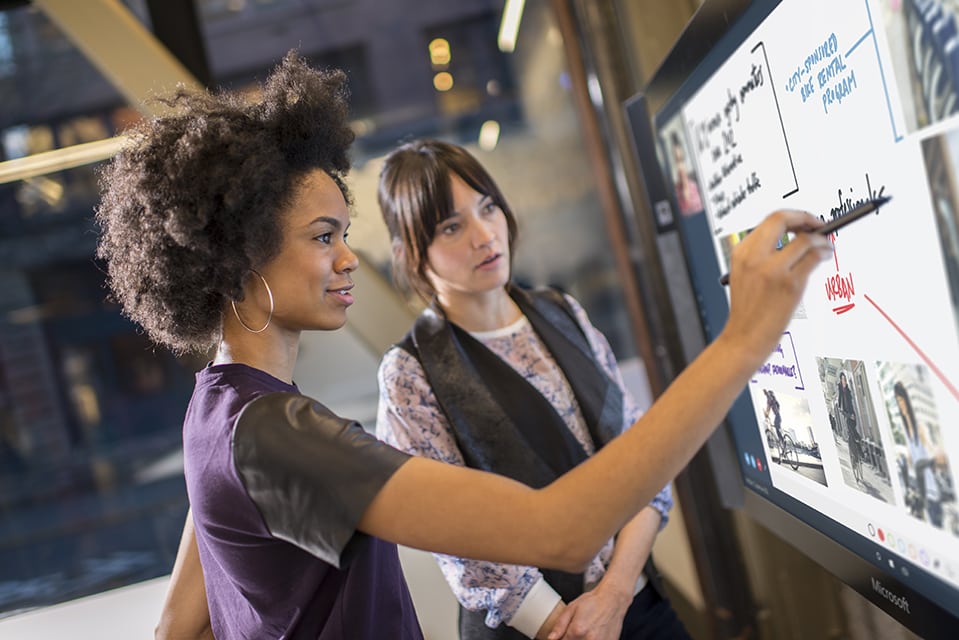Data and Analytics are Defining the Future of Hotel Employee-Guest Relations

Skift Take
This sponsored content was created in collaboration with a Skift partner.
When we talk about the role data analytics play in the travel industry we often start with its impact on marketing. For hospitality and travel leadership, however, data is playing an especially crucial part in another way too — empowering employees at the operations level to create guest experiences that drive both revenue and loyalty.
Coupled with the explosion of mobile technology, this approach is allowing travel employees to take an increasingly responsive approach to guests. The future, according to Martha Poulter, chief information officer at Starwood Hotels & Resorts, in a recent Skift article, may well belong to the “smart property.”
“We can think about ‘how do we make our properties smart,’ or ‘how can your in-room dining trays give us information about when you’re finished dining?’” Poulter says in the piece. “How can we optimize our on-property staff, and how they are deployed based on what the property is telling us, and what needs to be fixed, and what is getting used a lot?”
In the following sections, we look at these vectors with an eye for how data is driving fresh insights not just for marketers, but for operations leadership in travel, day by day.
Data and the Empowered Travel Employee
When operations is equipped with modern applications, devices, and access to intelligent information, it is better equipped to serve guests and increase revenue by acting on up-sell and cross-sell moments.
For example, at the moment a guest calls for room service, mobile-equipped ops representatives nearest the location can respond to both supervisors and the guest with the tap of a screen — proactively letting both sides know that a response is underway and even opening a conversation with the traveler that could lead to add-on purchases and additional service opportunities.[RN2] Likewise, connecting rooms to digital technology means guests staying in special pilot-program suites at The Cromwell, in Las Vegas, can use hotel-issued tablets to adjust their room’s lighting, control the thermostat and the in-room TV, order room service, make dinner reservations, request housekeeping, and research activities nearby to the hotel.
Airlines, as Finnair has discovered, are also part of the brand-to-guest conversation. In one example, with data and mobile devices working together, Finnair is able to solve rerouting challenges in proactive ways, ensuring that solutions to unexpected connections scenarios are “ready for passengers when they step off a flight, instead of waiting for passengers to seek out a customer service desk,” says Kari Hänninen, an architect in Corporate Information Management for the airline.
Both examples put the focus on proactive customer-relationship management, the kind that fuels loyalty, repeat business, and positive revenue outcomes.
Streamlining the Workload: Data Empowers Employees Behind the Scenes
It is not only the brand-to-guest relationship that data is changing for hospitality stakeholders. Behind the scenes, travel is streamlining and opening new vistas onto internal processes and best practices.
The Shangri-La International Hotel organization, for example, found that it was taking up to three days for staff to process payroll — a manual process that significantly taxed time and resources. Moving to a consolidated data solution based in the cloud, however, allowed Shangri-La to work faster — it now takes less than a day — saving money and time (and paper, incidentally). The data this process created also allows Shangri-La to generate reports and analysis that improve continuity across its nine Malaysian properties.
Data and Hospitality: Looking to the Future
This article is the third in a series that examines technology’s ongoing transformation of the hospitality industry.
In previous installments, we looked at how customer experiences are changing in the data-driven hotel, airplane cabin, and dining space, and at how data dashboards and intersections of marketing and ops are helping staff better meet traveler expectations.
In the next installment, we look at the wide-ranging future that all these elements help to forecast. The time has come to look at what tomorrow holds for hospitality as an industry uses digital tools to reach customers — and re-envisions itself along the way.
Explore with us where the travel industry is headed.
This content is created collaboratively in partnership with our sponsor Microsoft.




